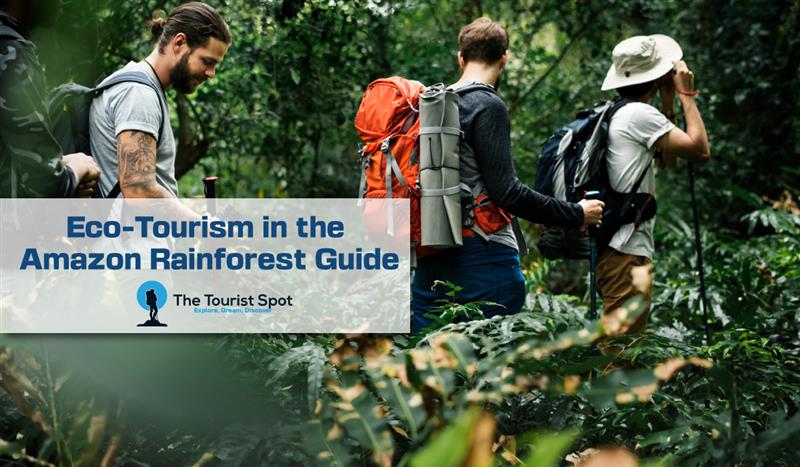The Amazon Rainforest is one of the most biodiverse regions on Earth, home to millions of species and rich indigenous cultures. For travelers seeking a meaningful and responsible adventure, eco-tourism in the Amazon offers an unforgettable experience. More than just a vacation, it’s a way to explore the natural world while supporting conservation efforts and local communities.
What Is Eco-Tourism in the Amazon?
Eco-tourism in the Amazon focuses on sustainable travel that minimizes environmental impact and promotes cultural awareness. Instead of large-scale resorts or mass tourism, eco-tourism relies on smaller, locally-run lodges, guided jungle treks, and educational experiences. It’s designed to protect the fragile rainforest ecosystem while giving travelers the opportunity to experience it firsthand.
By choosing eco-friendly tours, visitors help fund conservation programs, support indigenous businesses, and raise awareness about the importance of protecting the Amazon for future generations.
Top Eco-Tourism Activities in the Amazon
There are many ways to explore the Amazon while respecting its natural balance. Some of the most popular eco-tourism activities include:
- Guided Jungle Walks: Learn about the plants, insects, and wildlife that call the rainforest home with expert local guides who often have deep ancestral knowledge of the area.
- Wildlife Viewing: The Amazon is home to jaguars, sloths, macaws, monkeys, pink river dolphins, and more. Spotting animals in their natural environment is a true highlight.
- Canoe and River Tours: Glide through the Amazon’s waterways by canoe or small boat, giving you access to remote areas and a different perspective of the rainforest.
- Cultural Visits: Many eco-tourism experiences include interactions with indigenous communities, offering a respectful look into traditional ways of life, food, crafts, and stories.
Where to Go for Amazon Eco-Tourism
Several countries offer eco-tourism access to the Amazon, with Brazil, Peru, Ecuador, and Colombia being the most popular entry points.
- Manaus, Brazil: A key gateway into the Brazilian Amazon, Manaus is home to many eco-lodges and river tours.
- Iquitos, Peru: Reachable only by boat or air, Iquitos offers authentic Amazon experiences and easy access to the Pacaya-Samiria National Reserve.
- Tena, Ecuador: A smaller, less crowded destination with excellent community-based tourism projects and rainforest lodges.
- Leticia, Colombia: Located on the Amazon River, this town provides access to unique biodiversity and cultural encounters.
Best Time to Visit the Amazon
The Amazon is hot and humid year-round, but travel conditions vary based on the rainy and dry seasons. The wet season (December to May) offers fuller rivers and more canoe access, while the dry season (June to November) makes hiking easier and wildlife spotting more common. Both seasons have their benefits, depending on your interests.
Responsible Travel Tips
When participating in eco-tourism in the Amazon, it’s important to travel responsibly. Choose eco-certified lodges and tours, avoid single-use plastics, and respect local customs. Always follow your guide’s advice to ensure your visit leaves a positive impact.
Conclusion – Eco-tourism in the Amazon
Eco-tourism in the Amazon is more than just a journey—it’s a way to connect with one of the planet’s most vital ecosystems while helping to preserve it. From wildlife encounters to cultural exchanges, this type of travel offers adventure with purpose.

